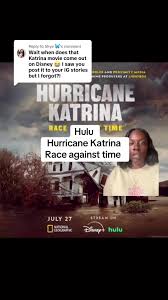
Introduction
The Hurricane Katrina documentary serves as a poignant reminder of one of the deadliest natural disasters in U.S. history. Making landfall on August 29, 2005, this catastrophic hurricane resulted in substantial loss of life and property, primarily impacting New Orleans and the Gulf Coast. The importance of discussing this documentary lies in its ability to provide insights into the human suffering and resilience experienced during and after the storm, as well as the broader implications for disaster preparedness and response.
Details of the Documentary
Numerous documentaries have been made on Hurricane Katrina, but one of the most notable is “When the Levees Broke: A Requiem in Four Acts,” directed by Spike Lee. Released in 2006, this four-hour documentary chronicles the events surrounding the hurricane, the subsequent flooding, and the failed response by local, state, and federal authorities. The film incorporates interviews with survivors and first responders, giving voice to those affected and highlighting the systemic failures that exacerbated the disaster.
Lee’s documentary delves deep into the socio-economic factors that contributed to the tragedy, particularly examining how race and poverty influenced the aftermath. Through powerful personal stories, the film portrays the harrowing experiences of those who returned to a city that changed irrevocably. Critics have praised the documentary for its unflinching look at the realities faced by many residents, as well as its artistic presentation.
Legacy and Significance
The Hurricane Katrina documentary remains significant today as it encourages critical discussions about climate change, urban planning, and emergency management. With increasing incidences of severe weather events, the lessons learned from Katrina’s aftermath are crucial for future preparedness. According to a report from the National Hurricane Center, understanding the failures highlighted in these documentaries can improve response strategies for upcoming storms.
Moreover, the documentary contributes to the historical narrative surrounding Hurricane Katrina, ensuring that the memories of the victims and the resilience of the survivors are not forgotten. It serves as an educational tool, prompting viewers to reflect on their own communities’ readiness for disasters.
Conclusion
In conclusion, the Hurricane Katrina documentary is more than just a recounting of events; it is an essential narrative that explores the complexities of disaster response and human resilience. As climate instability continues to provoke extreme weather, revisiting these tales will be invaluable for future disaster planning and response. The enduring legacy of such documentaries lies in their power to inspire action and change, ensuring that society learns from its past to build a more resilient future.



